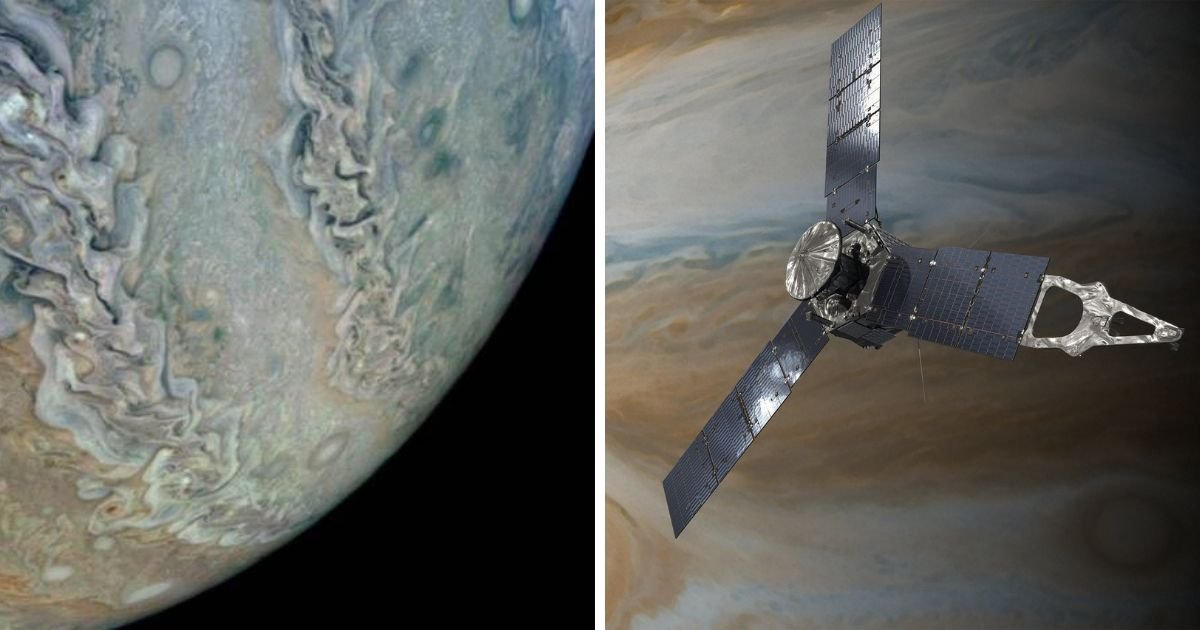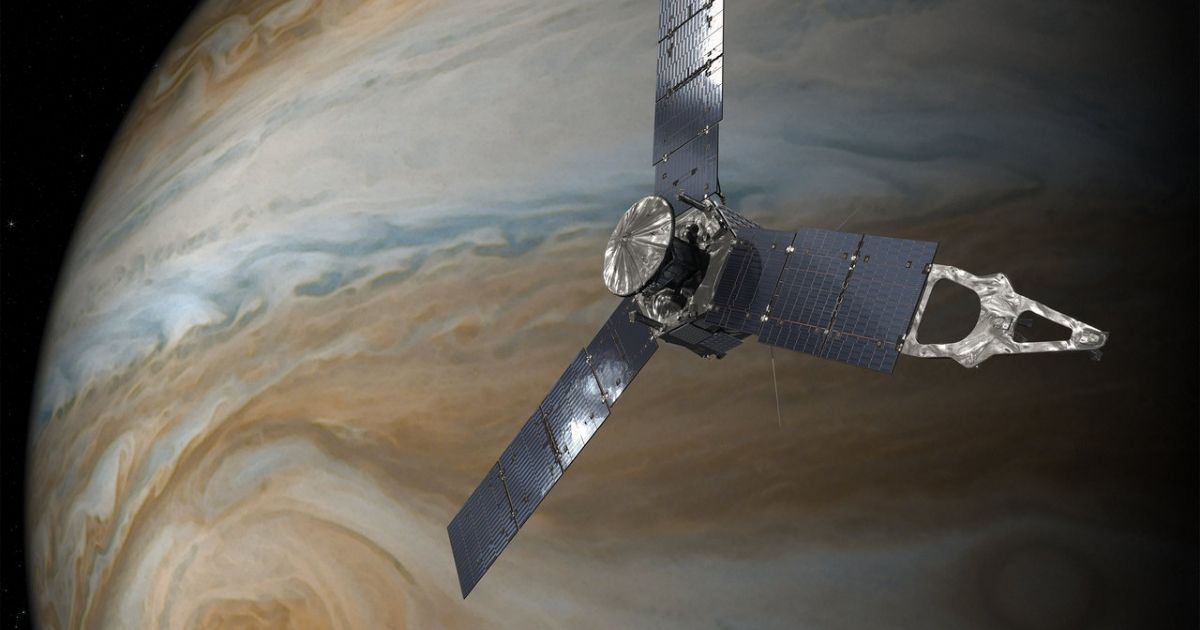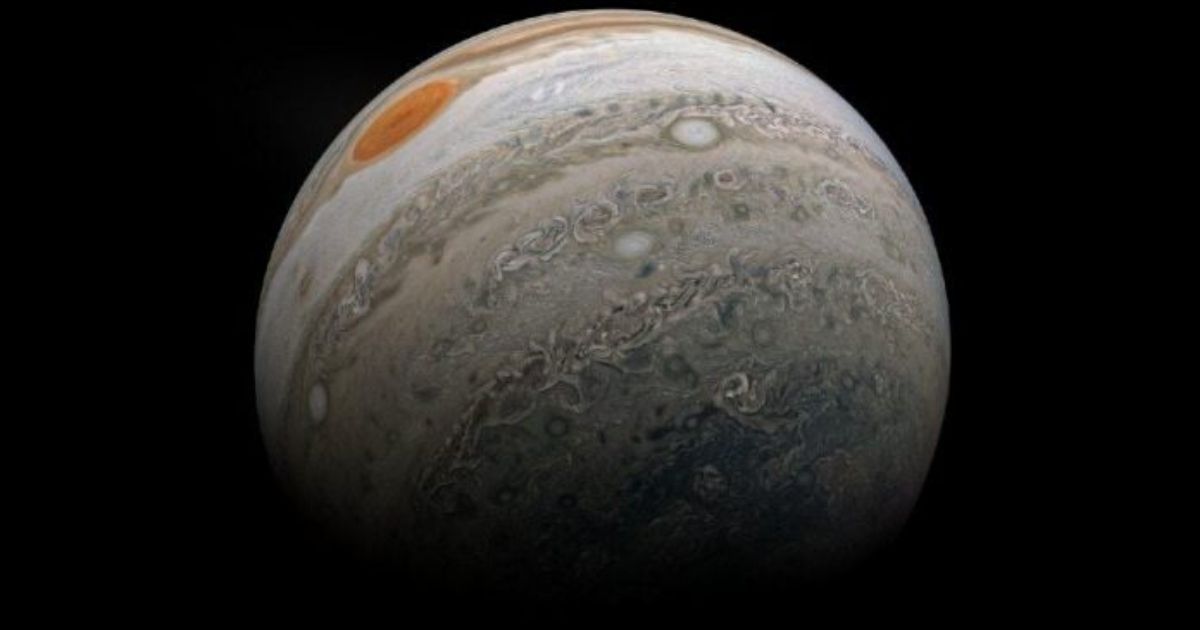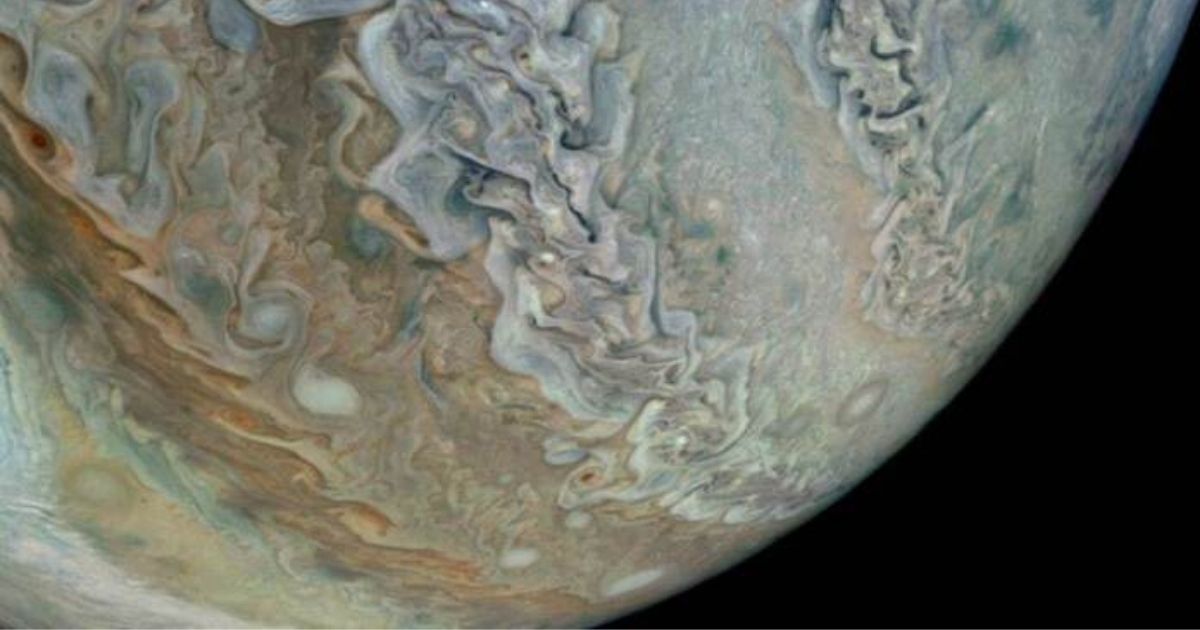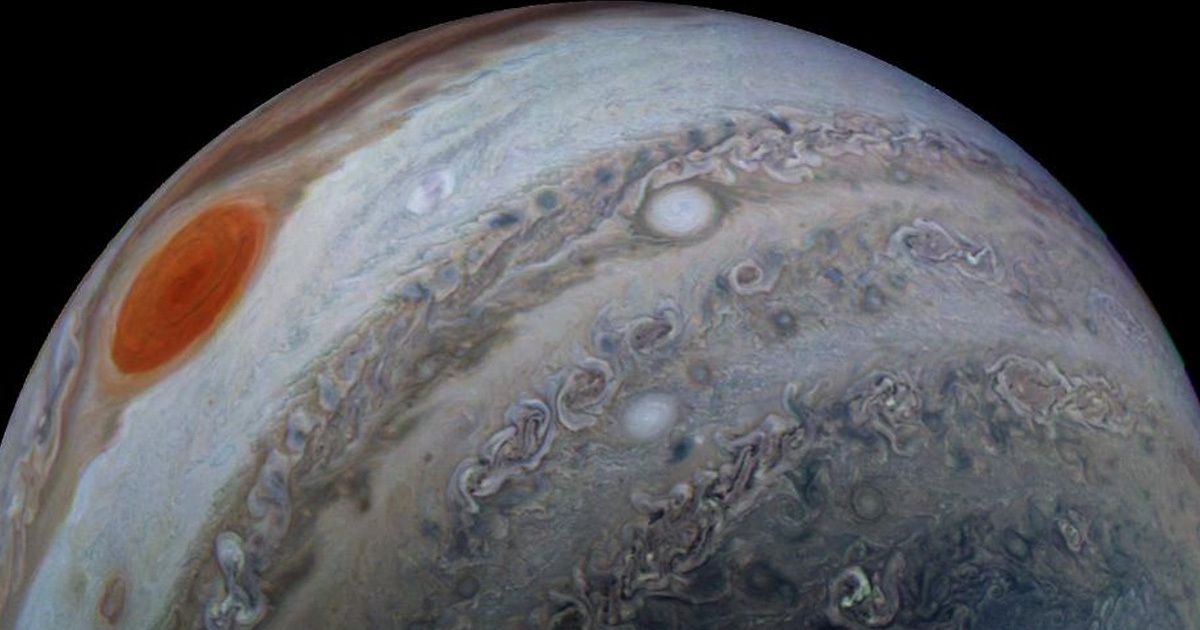Since July 5, 2016, Juno has been orbiting Jupiter.
The furthest solar-powered spacecraft ever to be sent into space, it is currently 500 million miles away from Earth traveling at 127,000 mph.
In Juno’s four years in orbit, the solar-powered spacecraft has been carrying out a scientific investigation into Jupiter from an elliptical polar orbit.
The spacecraft spent most of its time in a fair distance away from the gas giant. For a short period every 53 days, the elliptical orbit allows Juno to get close to Jupiter’s cloud tops, allowing for some truly magnificent images
Jupiter is the biggest planet in our solar system, it also rotates faster than any other of the earth’s neighboring planets and its 1 full day is completed in just 10 hours!
The fast rotation results in strong jet streams that separate the clouds of Jupiter into ‘bright zones and dark belts’, and then wrap around it according to NASA.
Juno’s purpose is to learn various aspects of Jupiter. This includes research into its composition, magnetic field, gravity field, and its well-known powerful storms.
The “JunoCam” has been fitted to the spacecraft for outreach purposes. Regardless of having only been made to last eight orbits, JunoCam’s still proving to be a tough little camera.
After each orbit, the data from the camera is downloaded before being handed to a team of scientists to work on.
Some people volunteered to process the images. The outputs were true works of art, capturing Jupiter’s iconic ‘racing stripes’ and the colossal jet stream.
Jupiter has some seriously dramatic storms compared with earth. Thunderheads reach five times higher and lightning flashes can be up to three times more energetic than even the biggest ‘super bolts’ witnessed on our planet.


